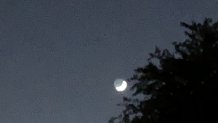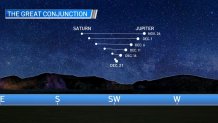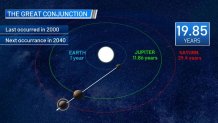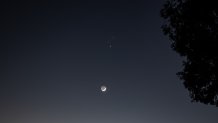Monday night, a unique astronomical event happened in the night sky. One that hasn't been seen in nearly 800 years.
It’s being called the “Christmas Star” but it’s actually two planets – Jupiter and Saturn in what's known as the "Great Conjunction."

The planets have appeared as two bright points of light in the sky for days now but on Monday night on the southwest horizon about an hour after sunset, they were so close it almost looked like one bright star.

“They are so bright that they are easy to observe even in light-polluted Dallas. It’s a wonderful opportunity for families to look at the sky together,” said Dr. Mary Urquhart, a planetary scientist and associate professor for UT Dallas.
Local
The latest news from around North Texas.
She said this moment is so rare because all three worlds – Earth, Jupiter and Saturn – must line up in their orbits in just the right way for such close conjunction to happen.

“So what makes this particular event so special isn’t just because it’s a rarity, that it hasn’t been seen in our sky in about 800 years since 1226 -- but that it’s happening on winter solstice. It’s happening very close to Christmas. We will have both of the planets actually not only appear bright in our sky but appear almost to touch, if not actually touching,” she said.

Dr. Urquhart said the last time the two planets united in the sky was in 1623, the era of Italian astronomer Galileo Galilei. However, it could not be seen because the moment was obscured by the sun. It was just thirteen years earlier in 1610 that Galileo turned his telescope to the sky to observe the moons of Jupiter and Saturn.
Click here for viewing and photography tips from NASA.
“It’s a wonderful opportunity to observe the sky even with just your unaided eye,” she said. “If you happen to have binoculars or a telescope it’s even better. On the 21st, you can be able to see, assuming we have clear skies, Jupiter and Saturn in the same view.”
The two planets were at their closest on Monday night and will get move further and further apart after that.



